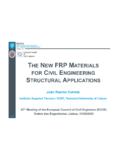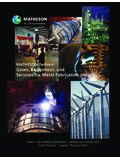Transcription of Civil Engineering Practical Notes A-Z
1 Civil Engineering Practical Notes A-Z Second Edition Vincent T. H. CHU Civil Engineering Practical Notes A-Z Vincent T. H. CHU 2 CONTENTS Preface 3 1. Bridge Works 4 2. Concrete Works 23 3. Drainage Works 48 4.
2 Geotechnical Works 63 5. Marine Works 74 6. Piles and Foundation 81 7. Roadworks 94 8. Steelworks 112 9. Waterworks and Tunneling 119 References 132 About the author 138 Civil Engineering Practical Notes A-Z Vincent T.
3 H. CHU 3 Preface This book is intended primarily to arouse the interests of graduate engineers, assistant engineers and engineers in the technical aspect of Civil Engineering works. The content of the book mainly focuses on providing the reasons of adoption of the various current practices of Civil Engineering . By understanding the underlying principles of Engineering practices, graduate engineers/assistant engineers/engineers may develop an interest in Civil Engineering works and hence to make improvements to existing practices in Civil Engineering .
4 It is also intended that the book will serve as a useful source of reference for practicing engineers. The author is currently writing the book "200 Questions and Answers on Practical Civil Engineering Works Part II" and he sincerely invites the submission of Civil Engineering questions to email to askvincentchu to facilitate the completion of the book. For those questions selected by the author to be published in his new book, a free copy of the book shall be delivered to the author of those questions.
5 It is glad to publish this second edition of book. In this edition, many new topics (about 30 items) are introduced when compared with first edition which, I believe would further enrich the content of this book. Should you have any comments on the book, please feel free to send to my email askvincentchu and discuss. Vincent T. H. CHU April 2009 Civil Engineering Practical Notes A-Z Vincent T. H. CHU 4 Chapter 1. Bridge Works Advantages of continuous multiple-span deck over simply supported multiple-span deck Movement joints are normally added to bridge structures to accommodate movements due to dimensional changes arising from temperature variation, shrinkage, creep and effect of prestress.
6 However, the provision of excessive movement joints should be avoided in design because movement joints always encounter problems giving rise to trouble in normal operation and this increases the cost of maintenance. Some designers may prefer to add more movement joints to guard against possible occurrence of differential settlements. However, the effect of continuity is disabled by this excessive introduction of movement joints. From structural point of view, the use of continuous deck enhances the reduction of bridge deck thickness.
7 Moreover, deck continuity allows the potential increase in headroom in the mid-span of bridges by using sucker deck principle. Some designers may prefer to employ the use of simply supported multiple-span deck to guard against possible occurrence of differential settlements. However, the effect of continuity is undermined by the introduction of movement joints. In essence, the structural reserve provided by a continuous bridge is destroyed by the multiple-span statically determinate structure resulting from the addition of joints.
8 Moreover, the reduction of joints in bridge structures represents substantial cost savings arising from the construction and maintenance costs of movement joints. The reduction of deck thickness helps to cut the cost for both the deck and foundation. In particular, the number of bearings in each piers is substantially reduced when compared with the case of simply supported multiple-span deck. Civil Engineering Practical Notes A-Z Vincent T. H. CHU 5 Benefits of using the bridge form of precast prestressed beams supporting in-situ concrete top slab The potential benefits of using the bridge form of precast prestressed beams supporting in-situ concrete top slab are: (i) For bridges built on top of rivers and carriageway, this bridge form provides the working platform by the precast beams so that erection of falsework is not required.
9 (ii) This bridge form generally does not require any transverse beams or diaphragms (except at the location of bridge supports), leading to reduction of construction time and cost. (iii) It creates the potential for simultaneous construction with several spans. Coatings at the back faces of abutments There are different views on the necessity of the application of protective coatings (may be in the form of two coats of paint) to the back faces of bridge abutment [30]. The main purpose of this coating serves to provide waterproofing effect to the back faces of abutments.
10 By reducing the seepage of water through the concrete, the amount of dirty materials accumulating on the surface of concrete would be significantly decreased. Engineers tend to consider this as an inexpensive method to provide extra protection to concrete. However, others may consider that such provision is a waste of money and is not worthwhile to spend additional money on this. Fig. Coatings at back faces of an abutment. Civil Engineering Practical Notes A-Z Vincent T. H. CHU 6 Dimples in Polytetrafluoroethylene (PTFE) PTFE is a flurocarbon polymer which possesses good chemical resistance and can function in a wide range of temperature.






